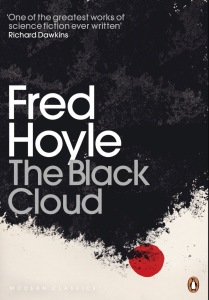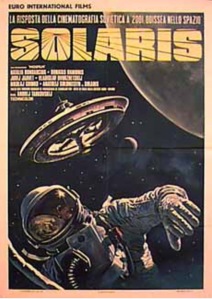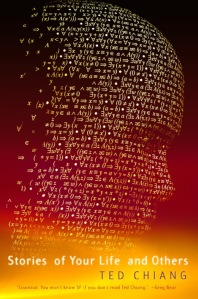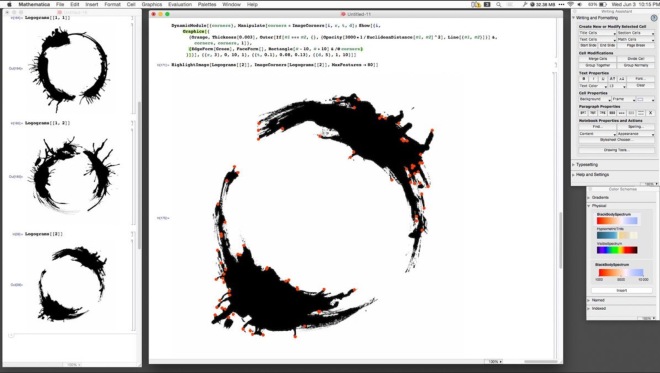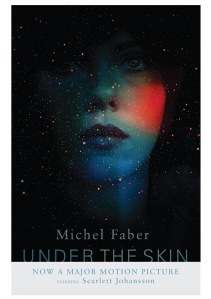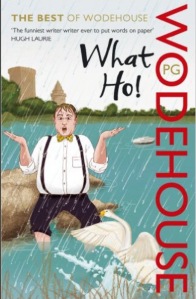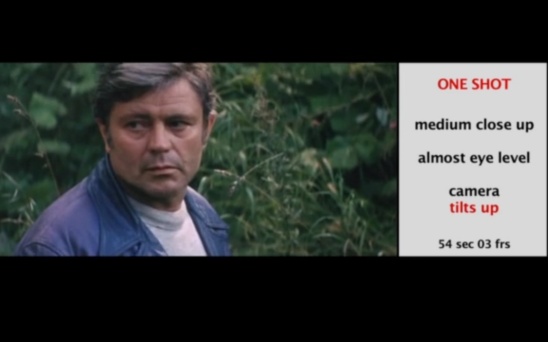
poster available at: http://mules9.com/bladerun
I think the first time I really contemplated mortality with an adult mind was after watching the “Tears in Rain” monologue of replicant Roy Batty. At the time, I suddenly found the idea of being human, with a finite existence, all at once liberating, exhilarating and immeasurably sad and terrifying. Also, I suddenly found immortality and eternity equally terrifying. Like many of the critics of the day, I didn’t quite grasp the clairvoyance of Ridley Scott’s Blade Runner (1982). It was darker and more profound than I could understand. But by so effectively blurring the lines between robot and human, the film forced me think, or inspired me to think, on what it would really mean to live forever, on what it means to be human, and if there is any real value in empathy.
I always enjoy bleakness and gloom in films, and I have always been attracted to dystopian themes, especially in dense urban environments, and I am not sure why. Maybe it is the contrast of the hopelessness of the future with the relative banality of the present day that clarifies drama. Perhaps it appeals to that melancholic introvert in me. Whatever the reason, I find these settings ideal for a story.
There are many superficial qualities of Blade Runner that have garnered much praise (Click here for a synopsis of the movie): clever use of light, gritty and realistic sets, the use of rain and water, the prophetic ideas of future society, the unmistakable (and strangely dated yet timeless) music of Vangelis, the poetic dialogues and monologues in Hampton Fancher´s script. By superficial I don’t mean frivolous. Any one of these elements alone would have made an impression, but they would not have had the
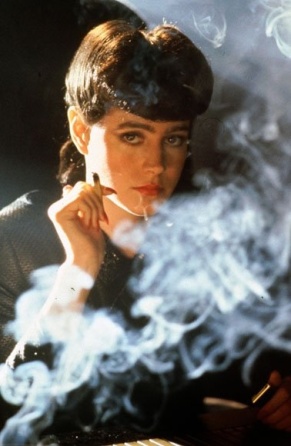
Rachael, beginning to suspect that she may not be human like she´s been told.
collective power of all of them together. I think the contrasts are particularly powerful in Blade Runner, and they go well beyond a simple human-robot dichotomy. The extremes of light rapidly change from blinding to pitch. The squalid and impure environment of the city and the lavish quarters of a well-off CEO. The violent Batty who searches for a longer life and the tender, beautiful android who does’t know she’s been manufactured. The architecture of the Mayan-esque pyramid of the Tyrell Corporation building set between towering modern skyscrapers. The loner amongst the masses. These contrasts are layers that enrich the film and allow us to understand the characters and the extremes that they represent, and therefore we begin a new understanding of what it means to be human.
Those who label Blade Runner parody rather than a fine work of pastiche simply haven’t really seen the movie. Openly adopting film noir, weaving the running narrative of a reflective, lonesome and detached man on a hapless mission of redemption in a post nuclear holocaust, Blade Runner showed us how human good sci-fi can and should be. And the results could have been disastrous, but they were not. The humanity and nostalgia complement what might otherwise be just another example of our lazy concept of an automated, hyper-computerized future (most of modern science fiction).
Part of the dystopian feel comes in the form of a sort of Marxist critique of capitalism and how an all-encompassing corporate environment isolates and delegitimizes the individual. The decadence in the movie, perhaps seen to some as exaggerated, is portrayed as a direct result of a specific system run rampant on the world. We have all seen what the excesses of commercialism and capitalism can do to the mind, soul, and our sense of creativity. In Blade Runner, it seems to me this theme is purposely pervasive and hyperbolic. Over everything (also quite literally, with blimps and police patrols above) looms an imposing presence, the towering god-like presence of the Tyrell Corporation, a complex but intentionally crafted system governing an ethnically diverse population that is so desensitized that it isn´t interested in human connections. Yet it somehow operates, albeit in an overwhelming chaos where the dreams and desires of humans are rendered almost meaningless (and those of a robot less than meaningless). Deckard is a loner (it seems by choice), the replicants are slaves who, in practice, are assigned a wholly meaningless existence other than servitude to the all-encompassing system. The inherent worth of both humans and replicants is gauged by their productivity. Around each English-speaking character is a sea of humanity speaking a foreign language, intensifying the isolation and the interaction between those characters. Talk about a plausible dystopia.

Inside the lush office of the Tyrell Corporation.
Another aspect of Blade Runner that has left an impression on me is the idea of memories and our concept of remembering. Replicants receive fragmented memories from their creators, contrived ideas, sometimes drawn from reality, other times constructed. Deckard, whether or not he himself is a replicant, is forced to contemplate the value of memories and how they validate our sentience (and perhaps more importantly, the “sentience” of artificially manufactured androids). Our distant memories are often dubious and our connection to the past can be tenuous. Sometimes we invent or embellish past events, sometimes we block out the traumatic ones. Sometimes a smell or a song will bring back a feeling or a vague memory that we can´t quite precipitate. But it seems that these memories are a large part of what separate us from artificial intelligence. I find that Blade Runner, amongst its many questions, asks: In the end is there all that much that would set us apart?



